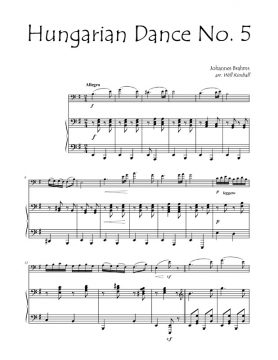PROGRAM NOTES
Johannes Brahms (1833 – 1897), the great conservative Romantic, is considered by many to be Beethoven’s true successor and is counted among the prestigious 3 B’s of Classical music – Bach, Beethoven, and Brahms.
Brahms’s exposure to Hungarian and so-called gypsy music began when he was young–after the Hungarian uprising in 1848 (which resulted in a wave of emigration) and during tours with Hungarian violinist Eduard Reményi. This music made a lifelong impression on Brahms, with characteristics like the use of triplet figures and irregular rhythms reflected in a large portion of his music.
The Hungarian Dances, evoking directly the warm blood of Hungarian gypsy music, consist of 21 dances, originally composed for piano four hands. Numbers 1, 3, and 10 were subsequently set for symphony orchestra by the composer (all of the dances have now been arranged by various musicians for orchestra), followed by settings of several of the dances for solo piano. Violin virtuoso Joseph Joachim, a lifelong friend of Brahms, arranged all 21 of the dances for violin and piano.
The 5th dance, originally in F-sharp minor, is probably the most celebrated of the set. The present arrangement of this dance for trombone and piano is based partially on Joachim’s arrangement for violin, though it also draws on a version for solo piano. It showcases the both the expressive and technical possibilities of the trombone.
Will Kimball is trombone professor at Brigham Young University. He has held principal trombone positions with the Cedar Rapids Symphony and the Arkansas Symphony Orchestra. Will has recorded for ESPN, Disney, and the Discovery Channel, as well as for movies such as “The Sandlot” and “Forever Strong.” His recent solo CD, “Collage,” is produced by Tantara Records, as is his recent CD with the Utah Trombone Authority quartet. Will is a frequent guest recitalist, and his research interests of breathing and alto trombone have led to a number of scholarly articles and clinics. His teachers included Gail Wilson, Scott Hartman, Brian Bowman, Murray Crewe, Larry Zalkind, and Daniel Bachelder.
Back to Solo
